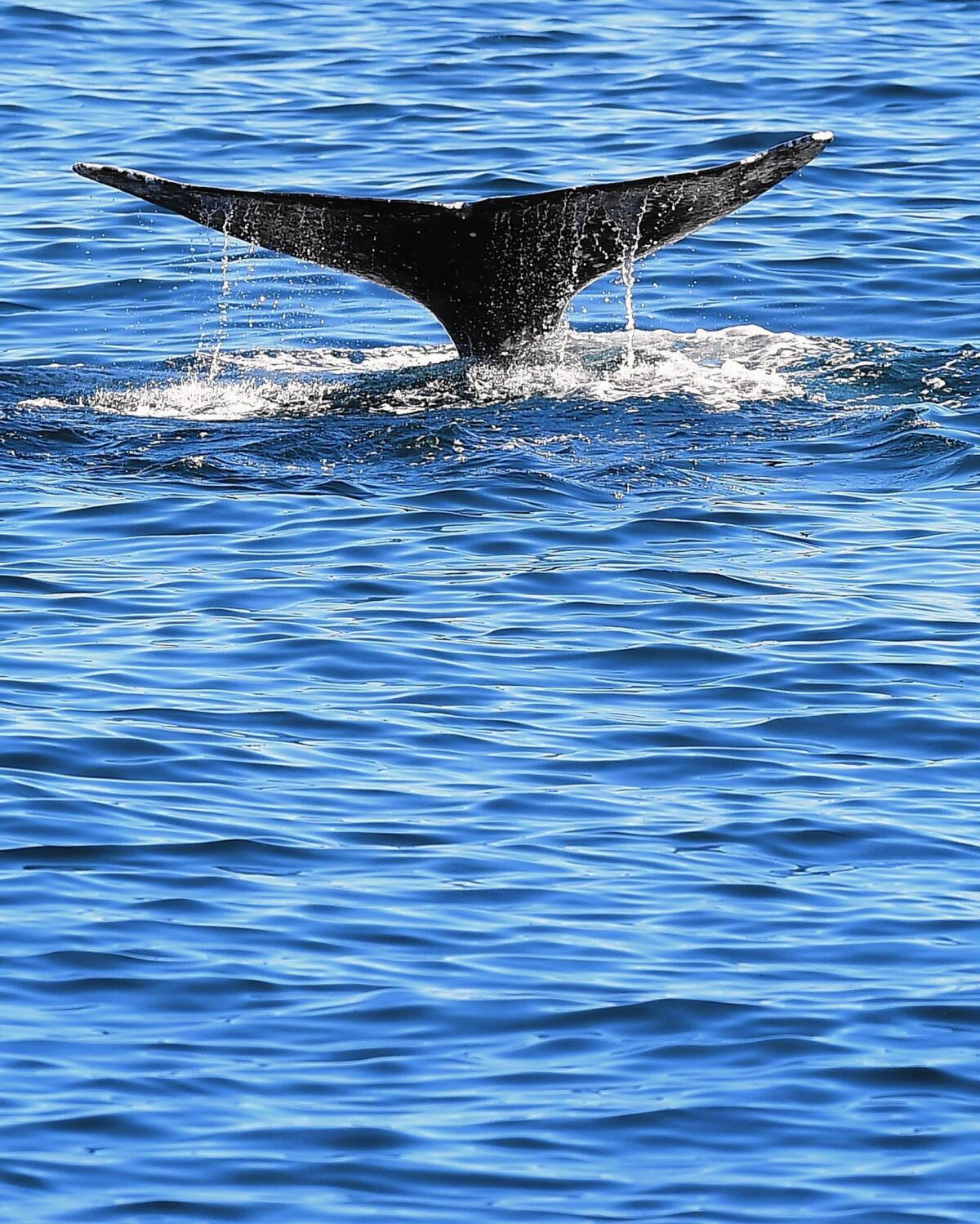From the Boathouse: A whale of a sight-seeing trip

Ahoy, and the whales have been seen breaching.
It’s that time of the year again for whale watching off our coastline in the Pacific Ocean and sometimes in our harbor as well, when a curious whale ventures inside the jetty entrance. Recently, landlubbers have been lucky to spot gray whales breaching close to the shore, and at least one was spotted inside the jetties.
Now, I have seen whales occasionally swimming through the harbor over the decades, so do not become alarmed if a whale takes a detour from its annual migration path. As an important educational reminder, do not call a whale a fish. Whales are warm-blooded, air-breathing mammals, hence the blowhole, and they swim in a pod, not a school.
The gray whales are the most abundant species you will see off our coast, but you might be lucky to see other species, like orcas or blues. A whale-watching trip while aboard a recreational or commercial boat is the best method to watch whales in their natural environment. If you do not have a boat or a friend with a boat whom you can bribe to take you out, then I highly recommend a whale-watching trip offered by one of the local sport-fishing companies.
However, if you do have a boat and decide to go whale-watching, remember there are boating regulations to protect the whales. The federal agency responsible for protecting gray whales is the NOAA Fisheries Service, which abides by the 1972 Marine Mammal Protection Act. The regulations are necessary to protect the whales from harassment, and for a safe, non-disruptive migration swim.
A quick review of the regulations: Remember, when paralleling whales within 100 yards, that boaters should not operate at speeds faster than a whale or group of whales. Skippers need to maintain a constant speed while paralleling or following whales within 100 yards of the mammals.
Also, you cannot cause a whale to change direction by your actions at the helm. In addition, for those aircraft pilots, you cannot fly lower than 1,000 feet when within a 100-yard horizontal distance from a whale.
Additionally, swimmers and divers cannot approach whales either, and never attempt to feed whales. Never try to swim out to a whale to “pet” it, as whales have been known to flick swimmers away, causing injuries to the person who almost became eligible for the annual Darwin awards.
The boaters I know are very considerate to the ocean’s creatures and would never harass the whales. However, there are always a few whom the regulations are written for, and you should report anyone intentionally harassing the whales. Boaters can radio the Coast Guard on VHF marine channel 16 or call the hotline at (800) 853-1964.
Lastly, you can read the regulations and whale species that are off the Southern California coast at nmfs.noaa.gov/pr/pdfs/education/california_whale_watching_guidelines.pdf. I recommend that you print the PDF flier and take it with you when you venture out to sea.
*
Tip of the week: If you are planning to go whale-watching aboard your boat with friends, then you need to check your man-overboard ring buoy. Most likely, if your boat is ocean-seaworthy, then you are required to have a ring buoy with a line attached onboard.
We are in the middle of winter, and the low ocean-water temperatures will quickly cause hypothermia to someone who has fallen in the water. That person will rapidly lose muscle strength the longer they are in the cold water, and thus, they will be challenged to hold onto a ring buoy.
Therefore, where is your ring buoy, and is it ready to use without a tangled line? Do you know how to toss the buoy underhanded over the person’s head? You can practice throwing your ring buoy before you leave the dock. Also, I always keep a spare lifejacket by the helm that I can immediately grab and throw to someone who has fallen overboard.
Take the time to plan what to do if someone falls overboard, and brief your guests on all the safety procedures prior to getting underway.
As always, just keep an eye to the weather for any changes. Please be boat smart and boat safe. Lastly, please boat responsibly during the parades and look behind you before you turn the wheel at the helm.
The original boating program, “Boathouse TV & Radio Shows,” has stretched from coast to coast for more than two decades. See the details at boathousetv.com, facebook.com/boathouseradio and twitter.com/boathouseradio.
Safe voyages!
---
MIKE WHITEHEAD is a boating columnist for the Daily Pilot. Send marine-related thoughts and story suggestions to mike@boathousetv.com or go to www.boathousetv.com.